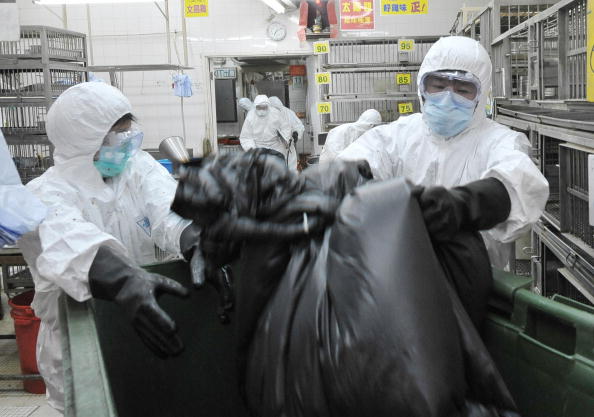Hong Kong ordered a cull of poultry across all the city's markets today in a bid to stop the spread of the H5N1 virus between birds scattered across the territory.
Officials last week found the bird flu virus at a poultry stall in one of the city's many so-called wet markets and ordered the culling of 2,700 birds over the week.
Government officials said today the virus had since spread among the island's poultry population.
"We have not found any dead chickens with the virus - not yet. We have not had any human cases," said Cheng Siu-hing, director of agriculture, fisheries and conservation.
"Of course, we cannot be complacent. That is why we're now taking decisive measures to close all remaining outlets and to cull all remaining live poultry."
Officials today estimated there were 3,500 live birds remaining at roughly 470 stores, stalls or markets across Hong Kong as of yesterday evening. But they stressed that no evidence of H5N1 had so far been found on farms or among wholesale live-chicken distributors.
Fears of the spread of infectious disease have run high since 2003, when an outbreak of Severe Acute Respiratory Syndrome (SARS) hit the city of seven million.
It was not the first appearance of bird flu in the territory. The city detected 21 birds with H5N1 last year alone, and periodically clamps down on imports from neighbouring mainland China - home to the world's largest poultry population.
The virus was discovered in a market in the city's Sham Shui Po neighbourhood last week, in the northern district of Kowloon, but health officials later found traces of the virus in the more remote New Territories and on the main island itself, home to much of the city's commerce and retail.
Hong Kong had banned poultry imports from mainland China for 21 days since the first instance of the virus was discovered over the weekend, as well as from local farms in the territory.
Since the H5N1 virus resurfaced in Asia in 2003, it has killed 241 people in a dozen countries, according to the World Health Organisation.
Experts fear the constantly mutating H5N1 virus could change into a form easily transmitted from person to person. This could sweep the world, killing millions.
Subscribe to Independent Premium to bookmark this article
Want to bookmark your favourite articles and stories to read or reference later? Start your Independent Premium subscription today.


Join our commenting forum
Join thought-provoking conversations, follow other Independent readers and see their replies